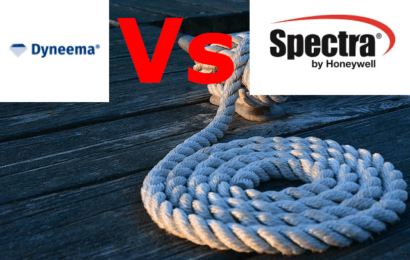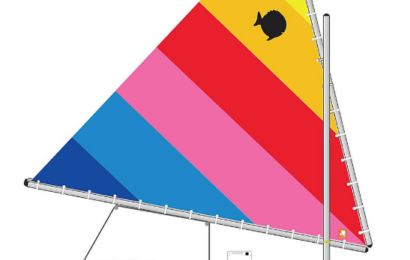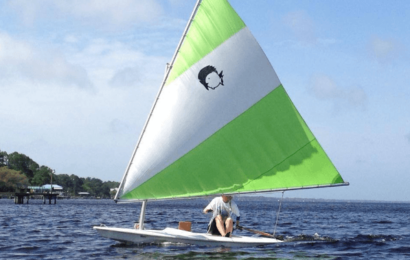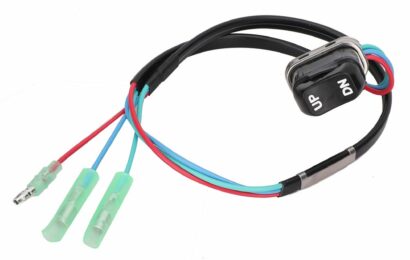A lily pad is undeniably a great addition to one’s water adventure. It is a portable, versatile, and low-maintenance water accessory has been every family’s favorite invention. The buoyant mat can be used in lakes, rivers, oceans, and pools and has the capacity to hold up a maximum distributed weight of 1,600.00 pounds. Making it the perfect accessory to one’s next water escapade.
Strapping it to a boat is a piece of cake most of the time. Users must learn the basics and alternatives to maximize its benefits. Thus, read along!
Why Strap a Lily Pad to a Boat?
As lily pads can be cumbersome, the most common way to carry it onto the water is to strap or attach it to the boat. In such a way, it would not occupy any space inside the boat. Hence, ensuring convenience and comfort among the boat’s passengers and avoiding unnecessary damage to the lily pad.

However, one must make sure that it is tethered correctly onto the boat as, although a water-floating device, lily pads are not designed for towing.
Where to Get a Lily Pad
Aqua Lily Pad, a major manufacturer and retailer of lily pads, offers original lily pads made from marine grade polyethylene foam material which is found to produce lily pads of the highest quality and durability. They also accept pad length and thickness customization. Lily pads are also available in other major retail outlets and most online stores in the United States.

Although it can be a little bit difficult to purchase and have it shipped outside the United States, major online shopping platforms such as Amazon and Alibaba offer thes items for sale.
There are also individuals who retail through social media platforms, but it is highly recommended to purchase from manufacturers or authorized retailers and distributors only.
Materials Needed
Lily pads are very user-friendly and straightforward to its users that one may not need additional materials to use it as all lily pads usually come with their own built-in tie down straps and tether kits for ease of usage.

However due to its volume and height, one may be intimidated and opt to buy additional straps or bungee cord to secure the lily pads onto the boat. If the tethers need replacing or one would like to add more, the user would also be needing a drill with a two-inch hole and some knots to secure the tethers.
All these materials may be bought at any home depot or local and online hardware stores.
Steps to Strap a Lily Pad
Attaching the lily pad to the boat is pretty simple and straightforward. See below basic steps in doing so. For security purposes, it is always best to check the manual first of the lily pad, should there be any.
Step 1: User’s Strength Capability
Always consider the weight and the height of the user who would be attaching or strapping the lily pad onto the boat. Users must be able to carry the weight of the lily pad and will be able to lift and put it on the back of the boat.
Step 2: Rolling up the Lily Pads

Roll up the lily pads using Velcro straps or tie-down straps. Typically, lily pads come with their own built-in straps. Remember to always use those as they are specially designed to support and at the same time give space enough not to cause damage to the material of the lily pads. If the user feels the need to use additional straps on top of the built-in ones, they may do so, provided the built-in ones are used as well.
Step 3: Propping of the Lily pad
Once securely rolled up, lift and position the lily pad at the back of the boat.
Step 4: Linking of the Lily pad to the Boat
Use the bungee cord that comes with your lily pad to secure it at the back of the boat. Fasten the bungee cord to one of the grab handles at the back of the boat all the way across to the other side of the boat.
Step 5: Usage of a Tie-Down Strap for Extra Security
For added security, use a tie-down strap. Crisscross it from one of the eyelets underneath your boat all the way to the tower. Do the same thing on the other side of the boat. Make sure to keep the buckles up away from the lily pad so as not to slam its coat gel.
Problems You May Encounter
Challenges in safely securing lily pads at the back of the boat may arise due to their weight and build. Rolling up the lily is one of the most common struggles users have encountered in the past.
Another problem may arise if the recommended straps and bungee cords are not used as advised. The length of the straps should be enough to secure the lily pads without leaving space that may also cause damage to the material of the lily pads. The type of the boat can also be a factor in an unsuccessful strapping of lily pads.
Alternatives and Workarounds
In rolling up the lily pads, one must remember that they have to be completely dried before being rolled up. If the lily pads are too cumbersome for one user, ask another for help in rolling up big ones.
To avoid problems with the straps, make sure to use the recommended straps only. If the straps have been damaged and need replacement or if the lily pad doesn’t come with straps on it, Velcro straps or kayak straps are the best alternatives.
If the user is still having trouble strapping the lily pad to the boat, the user may opt to rest it over the front of the deck of the boat or strap it to the swim steps instead.





